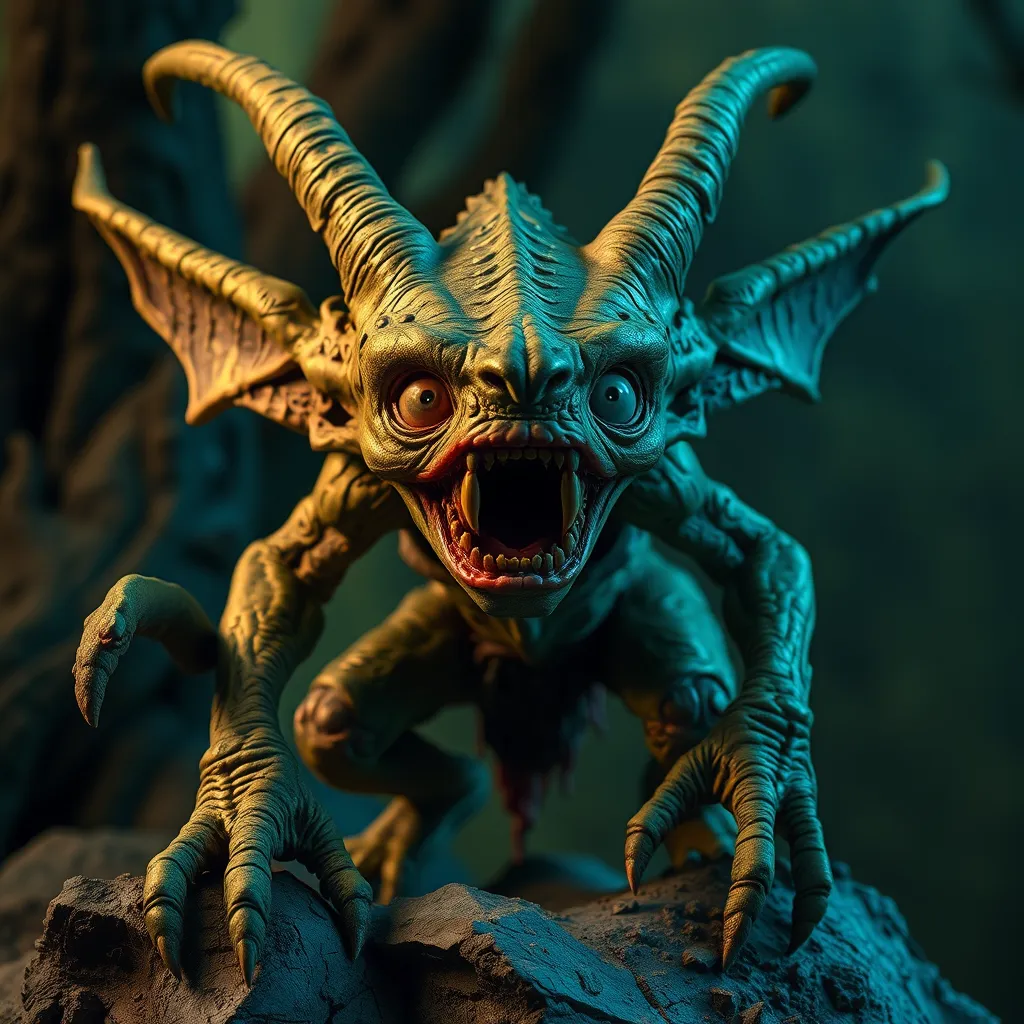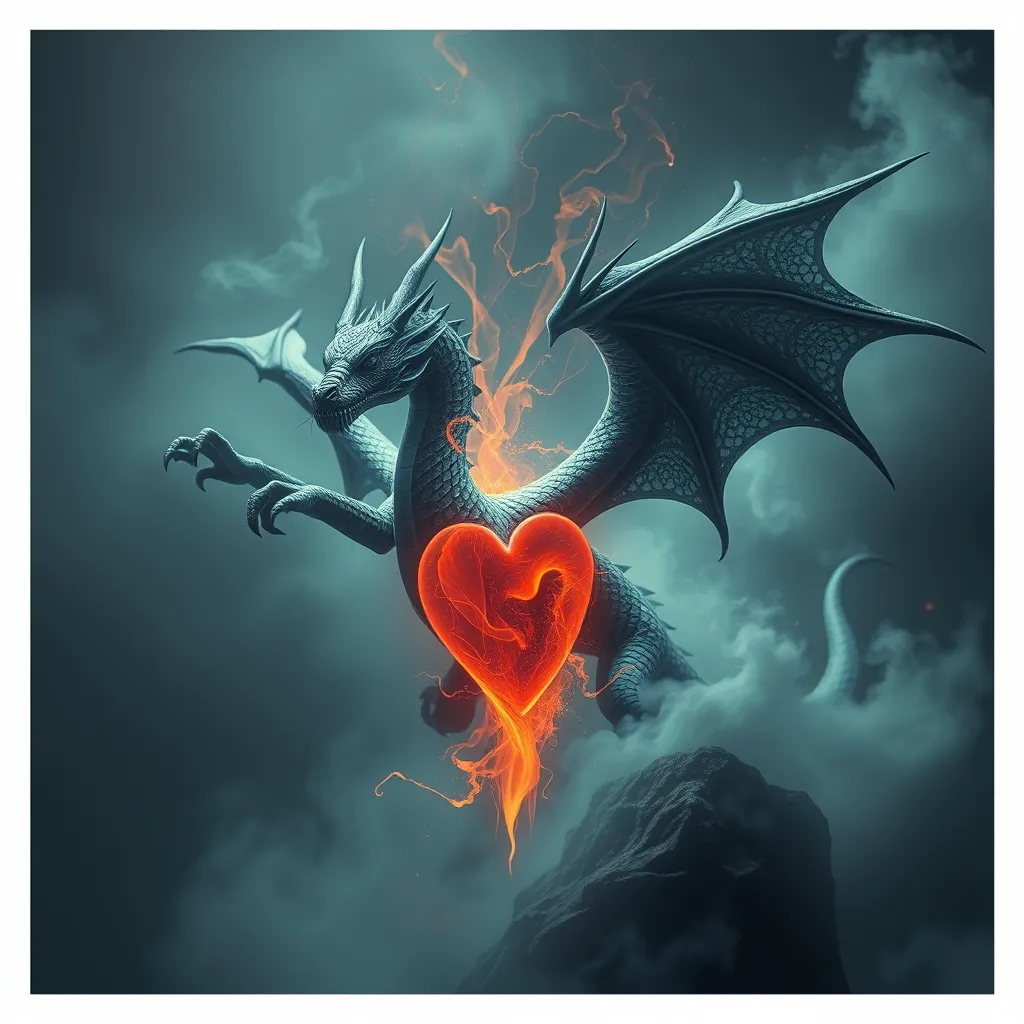Goblin Grotesque: A Global Exploration of Goblin Mythology
I. Introduction to Goblin Mythology
Goblins are often depicted as small, mischievous creatures in folklore, characterized by their grotesque appearance and cunning nature. They are typically viewed as troublesome beings who enjoy playing pranks on humans or causing mischief. In various cultures, goblins embody fears, anxieties, and the darker aspects of humanity.
The cultural significance of goblins varies widely, serving as symbols of the unknown, fear, and moral lessons. They appear in tales across the globe, from the mischievous sprites of Europe to the trickster spirits of Africa. Exploring goblin mythology across different cultures reveals the enduring nature of these figures and their importance in storytelling.
This article aims to delve into the diverse representations of goblins in mythology, examining their origins, cultural significance, and evolution over time. By understanding goblins globally, we can appreciate their role in shaping human experiences and narratives.
II. The Origins of Goblin Legends
The roots of goblin-like creatures can be traced back to ancient myths and legends. Many cultures have stories of small, supernatural beings that share characteristics with modern depictions of goblins. These figures often serve as embodiments of chaos, reflecting societal fears and challenges.
As societies evolved, so did the archetype of the goblin. In medieval Europe, goblins began to be associated with malevolence and trickery, whereas in earlier myths, they were often seen as helpful spirits. The transformation of goblins is a fascinating study of cultural evolution and adaptation.
The impact of language and translation also plays a crucial role in shaping goblin narratives. As stories traveled across borders, the characteristics and behaviors of goblins were altered, leading to a rich tapestry of goblin folklore worldwide. For example, the word “goblin” itself comes from the French “gobelin,” which reflects the creature’s European roots.
III. European Perspectives on Goblins
In British folklore, goblins are depicted as both mischievous sprites and malevolent beings. Tales of goblins in England often feature them as household spirits that can be helpful if treated well but can wreak havoc if offended. Famous stories include the tale of the “Hobgoblin,” a creature that was both feared and respected.
The role of goblins in German and Scandinavian myths takes on a more sinister tone. In these traditions, goblins are often portrayed as malevolent creatures associated with the dark forests and mountains, posing threats to travelers and children. Notable figures include the “Nisse” in Scandinavian folklore, who, while often helpful, can turn vengeful if disrespected.
A comparative analysis of goblins in Celtic and Slavic traditions reveals intriguing similarities and differences. Celtic goblins, such as the “Leprechaun,” are often seen as guardians of treasure, while Slavic folklore features “Domovoi,” spirits that protect the home. Both traditions highlight the duality of goblins as both protectors and troublemakers, reflecting cultural values and beliefs.
IV. Goblins in Asian Mythology
In Japanese mythology, the connection between goblins and supernatural beings is embodied in the concept of “yokai.” These spirit creatures can take many forms, some benevolent and others malevolent, showcasing a wide range of characteristics akin to those of goblins. Famous yokai like the “Tengu” combine elements of goblins, spirits, and even demons.
Chinese mythology features figures resembling goblins, such as the “Huli Jing,” a fox spirit known for its cunning and shape-shifting abilities. These creatures often embody themes of seduction and trickery, reflecting societal views on morality and behavior.
In Indian folklore, goblin-like creatures appear in various local legends, such as the “Rakshasa,” which are often portrayed as malevolent beings that disrupt order. However, these figures can also serve as protectors of certain communities, showcasing the complex nature of goblin archetypes in Indian culture.
V. The Goblin Archetype in African and Indigenous Mythologies
African folklore is rich with goblin-like figures that serve as tricksters and protectors. The “Trickster” archetype, found in many African cultures, embodies traits similar to those of goblins, playing pranks while also imparting moral lessons. Characters like Anansi, the spider, demonstrate the cleverness and cunning often attributed to goblins.
Indigenous North American beliefs feature goblin analogs in native stories, often representing the balance between chaos and order. Creatures like the “Wendigo” serve as cautionary tales about greed and excess, embodying fears and societal values.
The significance of goblins in community narratives extends beyond mere entertainment; they often serve as moral teachers, providing lessons about honesty, respect, and the consequences of one’s actions.
VI. Goblins in Modern Pop Culture
In modern literature and film, goblins have been represented in various ways, often drawing on traditional traits while infusing contemporary themes. Popular franchises like “The Hobbit” portray goblins as malevolent creatures that embody chaos and danger, while others, like the “Harry Potter” series, present goblins in a more nuanced light, showcasing their intelligence and resourcefulness.
The influence of gaming on the modern perception of goblins is significant, with many video games featuring goblins as characters. These portrayals often emphasize their cunning and trickster qualities, aligning with traditional narratives while allowing for new interpretations. Examples include goblins in games like “World of Warcraft,” where they are depicted as both comical and dangerous.
Comparing traditional goblin traits with contemporary portrayals reveals both continuity and change. While the mischievous nature remains, modern interpretations often explore themes of identity, belonging, and moral ambiguity, reflecting contemporary societal issues.
VII. The Psychological and Symbolic Interpretations of Goblins
Goblins can be seen as representations of societal fears and anxieties. They often embody the darker aspects of human nature, acting as mirrors that reflect our fears, insecurities, and moral dilemmas. This psychological interpretation allows for a deeper understanding of why goblins persist in cultural narratives.
The duality of goblins is a significant theme; they can be both harmful and helpful figures. This duality reflects the complexity of human nature and morality, showcasing the fine line between good and evil. Goblins often challenge characters to confront their fears, leading to personal growth and transformation.
Through their roles in folklore and mythology, goblins allow us to explore human nature and morality. They prompt us to question our values and beliefs, serving as a vehicle for examining the human experience.
VIII. Conclusion: The Enduring Legacy of Goblin Mythology
The exploration of goblin mythology across different cultures reveals key findings about the nature of these intriguing figures. Goblins serve as reflections of societal values, fears, and moral lessons, making them significant in storytelling.
In today’s society, goblin stories remain relevant, serving as reminders of our complexities and the moral dilemmas we face. As we continue to explore folklore, goblins will undoubtedly evolve, adapting to new contexts while retaining their core characteristics.
Future research and exploration of goblin folklore can enrich our understanding of these figures, offering insights into human nature and the cultural narratives that shape our world. The enduring legacy of goblins is a testament to the power of storytelling and its ability to connect us across cultures and generations.




